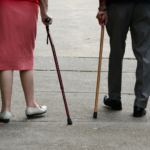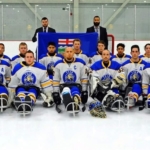Current thinking in surgical approaches to meniscus repair
With a Torn Meniscus, the Clock Is Ticking.
Not so long ago, surgeons thought that the meniscus was a vestigial structure. If it was damaged, we cut it out. But the more we have learned, the more we understand about the necessity of this structure. We know now that we should repair significant tears in the menisci of young people when we can and replace the menisci when we can’t. At the same time, our treatments are steadily improving.
Bert R. Mandelbaum MD DHL (Hon), Medscape Orthopedics April 22, 2016.
The menisci play a vital role in distributing forces that would otherwise concentrate on the articular cartilage or bone. By some estimates, a meniscectomy can more than double tibial femoral contact stresses and therefore be a major contributor to osteoarthritis.[1,2]
This is a particular concern in children who tear their menisci because they run a high probability of developing osteoarthritis within 10-20 years.[2] Fairbank changes consistent with arthritis—such as squaring of the condyles—often develop well before the arthritis itself and can be seen earlier using MRI.[3]
I still manage small tears with partial meniscectomy, simply removing whatever piece may be catching in the joint, as long as I can leave at least 70% of the meniscus intact. If the meniscectomy would leave less than 70% of the meniscus intact, and the patient does not have severe arthritis, I do whatever I can to repair the meniscus. When I cannot repair enough to leave at least 30% of the meniscus, I prefer to replace it with meniscus allograft transplantation.
I like to deal with the tear as soon as possible because I worry that the longer the patient walks around with the tear, the harder it will be to fix. In the short term, a partial or full meniscectomy may eliminate symptoms. But by the time the patient experiences symptoms from arthritis, it’s too late.
I cannot yet prove with evidence-based medicine that repairing or replacing the meniscus will prevent osteoarthritis. The studies done so far are in people whose arthritis had already started.[4] Trials will be difficult to design because meniscus tears come in so many shapes and sizes, and the trials would have to last several years because it takes that long for osteoarthritis to develop. In the meantime, I recommend surgery because I know what is likely to happen without it.
| Diagnosis: Listening, Physical Exam, and Imaging |
The first step in helping these patients is to identify the type of injury. I begin by listening to the symptoms. Was there a pop? Was there some twisting mechanism? What about pain and swelling? These symptoms usually indicate a meniscus tear, sometimes with a ligament tear as well.
Then I go into the physical examination. I use tests such as the McMurray test, which is to flex, extend, and rotate the knee. Catching (locking of the knee) or pain indicates a positive McMurray, which is consistent with a meniscus tear.
Next I look for confirmation from imaging. An x-ray will show bony abnormalities or fragments, fractures, or dislocations. Sometimes it’s just a pertinent negative. In 99% of meniscus tears in younger people, x-rays are perfectly normal.
Many generalists will refer the patient to a subspecialist for the next step: an MRI. Meniscus repair is extremely challenging, so the generalists usually want to put their patient in the hands of an expert.
With an MRI, you can confirm the etiology and sort the meniscus tears into one of three broad categories: isolated acute, associated acute, or degenerative.
| Observations on Acute Meniscus Tears |
In young people, meniscus tears are most likely to be acute, and often they are isolated—without significant damage to ligaments.
One type is a discoid lateral meniscus tear. In most people, the meniscus is crescent-shaped. But a certain percentage of the population has a D-shaped or a discoid lateral meniscus. I believe that the discoid lateral meniscus is a next step in human evolution because it is bigger and distributed more along the joint surface. But because it tends to be an incomplete mutation, some of the tissue is not durable enough and tends to tear.
Many discoid lateral meniscus tears can occur even without a significant fulcrum or twisting. Sometimes there is no apparent mechanism. You go back and try to figure out what happened, and the answer is that nothing really happened. The discoid meniscus, which resembles an elephant ear, just tore and became unstable.
Then you get into meniscus tears that occur from injury, usually from a twisting mechanism. Many times the meniscus will slip out, and the result is a bucket-handle tear. Usually those are pretty large C-shaped meniscus tears close to the periphery of the meniscus. This bucket handle gets caught in the intercondylar notch, and the knee can’t fully straighten.
This injury occurs fairly regularly in kids anywhere from 10 to 18 years old. It usually happens during sports. But it could be from falls. It could just be from horsing around, body surfing, or stepping in a hole. It could be a running back who twisted his leg as he stepped in the mud or a basketball player who came down on someone’s foot.
The MRI also tells me whether there is a meniscus tear associated with other ligamentous injuries. If the anterior cruciate ligament (ACL) is torn, the risk for damage to the meniscus increases. In fact, patients whose ruptured ACLs have been treated conservatively have a 4.7 times greater incidence of meniscus tears.[5]
Acute meniscus tears can occur through contact or noncontact mechanisms, but both medial and lateral tears seem to be associated especially with noncontact injuries. In the winter, for example, we see a lot of skiing injuries. Ligament injuries are often associated with meniscus injuries.[6]
| Degenerative Meniscus Tears in Older Patients |
There are very few meniscus injuries that occur from overuse. Overuse more often causes articular cartilage injuries. But menisci do degenerate with time in a kind of natural pathogenesis. Because their blood supply is limited, they often cannot regenerate. The components separate. Then the menisci displace. And when they displace, they cause symptoms.
The articular cartilage may degenerate in these people at the same time. The degeneration of the articular cartilage stimulates a cascade of cytokines, interleukin, and other inflammatory agents that also damage the meniscus. So when people have severe arthritis, their menisci almost always tear. I don’t manage these cases operatively because the prognosis is not good.
But I’m starting to treat older patients. I recently replaced the meniscus in a 50-year-old man who was very athletic. He didn’t have any degenerative changes, and the bucket-handle tear could not be repaired. Because some people can live to be 100, and we know what happens if you don’t have a meniscus, why not put one in there?
| Orthobiologics for Patients With Moderate Arthritis |
When people have moderate arthritis, I may still operate. But in these cases, I use orthobiologics—such as glucosamine, hyaluronic acid, platelet-rich plasma, and stem cell technology—to help manage it. Arthroscopic surgery alone may not be robust enough.
I use these orthobiologics in many other patients as well. The meniscus only has blood supply in its outer third. So we divide meniscus tears into those with a blood supply, which we refer to as “red-red,” those with a limited blood supply (“red-white”), and those with no blood supply (“white-white”).
The more “white” the tear, the more important it is to supplement the blood supply with orthobiologics. In the past, surgeons have tried a number of techniques—from clots to platelet-rich plasma, hyaluronic acid, and fenestrations in the meniscus itself.
I’m not aware of any randomized controlled trials testing these approaches. Some recent case-controlled studies of platelet-rich plasma showed mixed results,[7,8] but we know that it, as well as hyaluronic acid,[9] create a more anabolic and healing environment. So I think it’s worth using them in some patients.
I usually make those decisions based on the situation. For example, if I’m treating a big tear in a professional athlete—such as an elite basketball, football, or soccer player—I often need that meniscus to heal as quickly as possible and be as durable as possible. So I add platelet-rich plasma and/or hyaluronic acid.
I know that a lot of my colleagues who practice sports medicine on high school, club, and college elite athletes will also use a variety of orthobiologic agents in their patients.
We have gotten better in our technology of repairing meniscus tears. In particular, we can now use specialized devices to repair the meniscus in what we call an “all-inside” approach. The most important concept is to preserve, repair, and restore as much of the meniscus as we can.
These innovations, along with orthobiologics, mean that more and more patients with meniscus tears can benefit from treatment.
Source Medscape Orthopedics
| References |
- Meniscal tears: the effect of meniscectomy and of repair on intraarticular contact areas and stress in the human knee. A preliminary report, Baratz ME, Fu FH, Mengato R. Am J Sports Med. 1986 Jul-Aug;14(4):270-5.
- Osteoarthritis after arthroscopic partial meniscectomy, Rangger C, Klestil T, Gloetzer W, Kemmler G, Benedetto KP. Am J Sports Med. 1995 Mar-Apr;23(2):240-4.
- Isolated arthroscopic partial meniscectomy. Functional radiographic evaluation at five years, Bolano LE, Grana WA.
Am J Sports Med. 1993 May-Jun;21(3):432-7. - MRI evaluation of isolated arthroscopic partial meniscectomy patients at a minimum five-year follow-up, Williams RJ 3rd, Warner KK, Petrigliano FA, Potter HG, Hatch J, Cordasco FA. HSS J. 2007 Feb;3(1):35-43. doi: 10.1007/s11420-006-9031-2. Full text
- Correlation of meniscal and articular cartilage injuries in children and adolescents with timing of anterior cruciate ligament reconstruction, Anderson AF, Anderson CN. Am J Sports Med. 2015 Feb;43(2):275-81. doi: 10.1177/0363546514559912. Epub 2014 Dec 12.
- The METEOR trial: no rush to repair a torn meniscus, Hwang YG, Kwoh CK. Cleve Clin J Med. 2014 Apr;81(4):226-32. doi: 10.3949/ccjm.81a.13075.
- Treatment of meniscus tears during anterior cruciate ligament reconstruction, Noyes FR, Barber-Westin SD.
Arthroscopy. 2012 Jan;28(1):123-30. doi: 10.1016/j.arthro.2011.08.292. Epub 2011 Nov 9. Review. - Platelet-rich plasma in meniscal repair: does augmentation improve surgical outcomes? Griffin JW, Hadeed MM, Werner BC, Diduch DR, Carson EW, Miller MD. Clin Orthop Relat Res. 2015 May;473(5):1665-72. doi: 10.1007/s11999-015-4170-8. Epub 2015 Feb 6. Full text
- Platelet-rich plasma for open meniscal repair in young patients: any benefit? Pujol N, Salle De Chou E, Boisrenoult P, Beaufils P. Knee Surg Sports Traumatol Arthrosc. 2015 Jan;23(1):51-8. doi: 10.1007/s00167-014-3417-3. Epub 2014 Nov 7.
- Synergistic anabolic actions of hyaluronic acid and platelet-rich plasma on cartilage regeneration in osteoarthritis therapy, Chen WH, Lo WC, Hsu WC, Wei HJ, Liu HY, Lee CH, Tina Chen SY, Shieh YH, Williams DF, Deng WP. Biomaterials. 2014 Dec;35(36):9599-607. doi: 10.1016/j.biomaterials.2014.07.058. Epub 2014 Aug 28.
The METEOR trial: no rush to repair a torn meniscus, Hwang YG, Kwoh CK. Cleve Clin J Med. 2014 Apr;81(4):226-32. doi: 10.3949/ccjm.81a.13075.
Also see
Controversy continues about the treatment of meniscus tears Healio Orthopedics Today
An update on state-of-the-art surgery for the menisci Knee Guru
For Articular Cartilage Injury, a Holistic Approach Is Best Medscape Orthopedics







